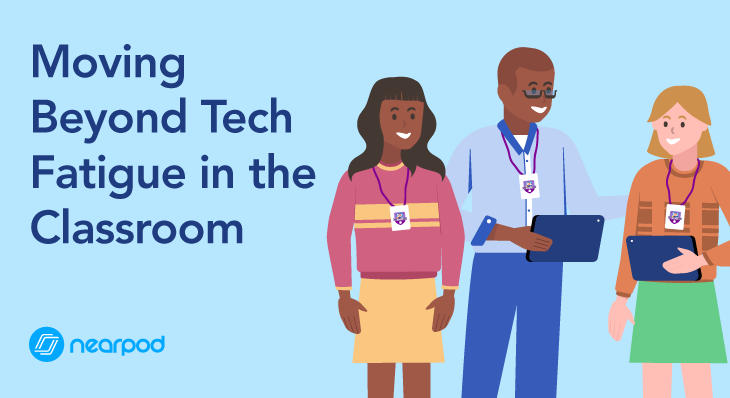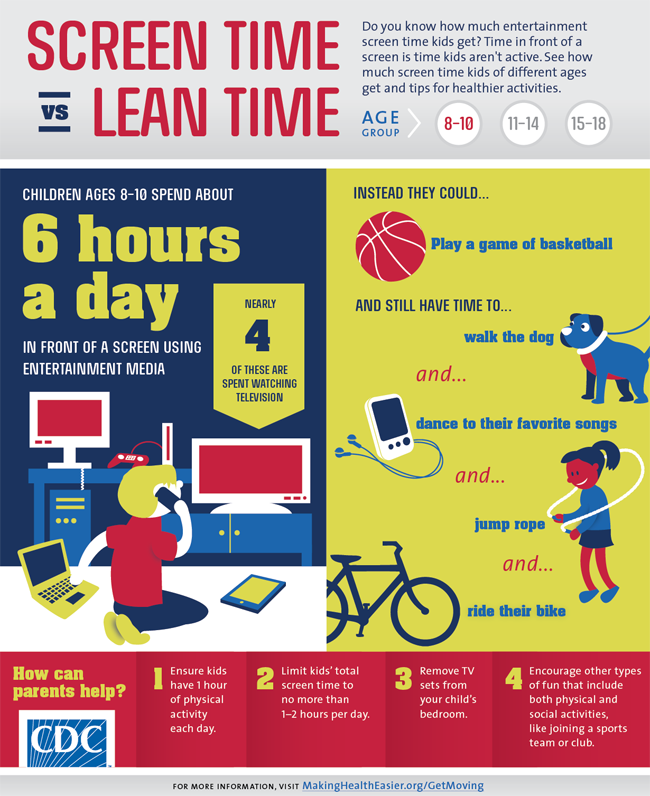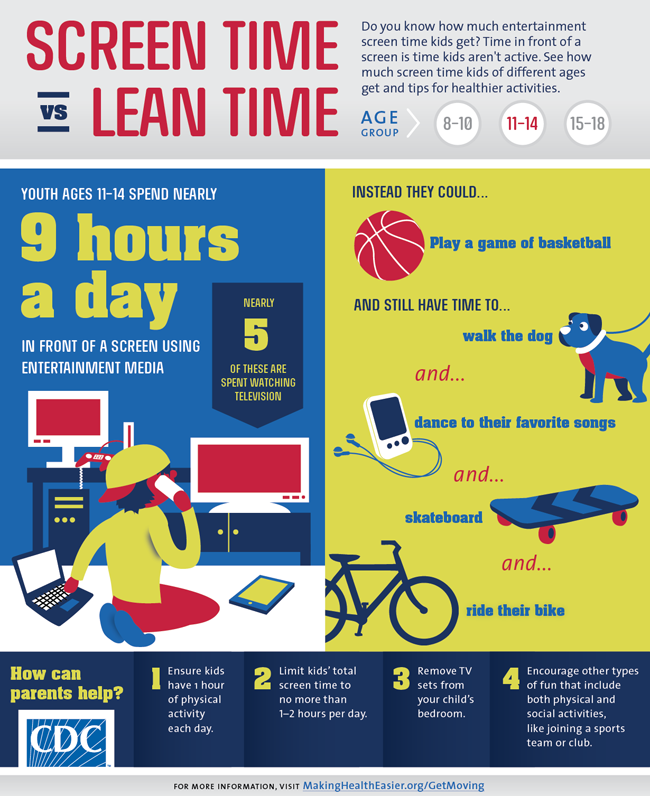
Moving Beyond Tech Fatigue in the Classroom
Teachers and students are particularly at risk these days when it comes to overcoming fatigue, especially tech fatigue. Otherwise known as screen fatigue, digital fatigue, or technostress, tech fatigue can come about simply by trying to keep up with the ever-changing edtech world. And it’s a real problem when it becomes an obstacle to meeting, nevermind embracing, short-term and long-term goals.
Several recent surveys have highlighted how teacher burnout and teacher attrition is at an all-time high. With the myriad of new challenges that teachers have faced during this pandemic, they are not only juggling daily instruction, but learning on their own time new methodology and new tools to reach kids wherever they may be, figuratively and literally. As leaders, administrators need to share best practices for recognizing and overcoming tech fatigue.
Protecting your investment from tech fatigue
Now couple that ever-changing tech landscape with the challenges that your school communities have shouldered over the past two years with shifting instructional models: from remote learning, to hybrid learning, to in-person learning… and back. As an administrator, you are probably the most aware of what a significant investment in time, effort, and money has been made by school communities when it comes to edtech. Embracing technology is no longer a nice-to-have but an essential ask for all stakeholders.
In 2021, the United States spent $27.6 billion on edtech, and Global Industry Analysts predicts that the global spend will reach $207.3 billion by 2026. Administrators need to lead the conversation around effective technology use. The bottom line shouldn’t be the cost of the technology, but what is being achieved with such spending. And these conclusions can only come about through meaningful dialog between schools, amongst staff, and with students and their families.
As with most things in life, there is a happy medium to technology use. And according to Richard Kurzweil’s theory, The Law of Accelerated Returns, technology will continue to yield exponential changes. There are so many new learning opportunities when it comes to thoughtful technology implementation, so we don’t want to throw the baby out with the bathwater just because of tech fatigue. Schools need to consider the context of how technology factors into individuals’ personal and professional lives — what is the appropriate amount of usage both inside and outside of the school day?
Time for a personal reflection on screen time!
Encourage your staff to take time to make some personal reflections about their own technology use. On average, American adults spend more time on screens than they do asleep. Results from multiple studies range from almost 8 hours per day to more than 19 hours per day; any way you slice it — that is a lot of time staring at a screen (or even screens)!
Screen time can be a necessary evil whether for classroom prep or a much-needed release with binge watching. It all comes down to balance, which is easier said than done. And research also does point out that technology isn’t always the villain — it can be other factors related to what we see or do with the technology. According to a 2019 study by Loughborough University in Britain, smartphone abstinence for 24 hours had no effect on one’s anxiety or mood, and similarly, Oxford University researchers found such social media abstinence for one day didn’t improve one’s well-being with regards to self-esteem or satisfaction.
There are many ways that administrators can model ways to set and work towards goals around personal and professional technology use. Consider sharing these self-care strategies for achieving such balance:
- Leverage your technology for good and reflect on your daily use data.
- Consider using tech controls to limit or lock your screen time.
- If possible, separate devices (if possible) for work versus personal use.
- Put phones out of the bedroom — out of arm’s reach — so you don’t linger online at bedtime or grab your device first thing in the morning.
- And maybe jumpstart it all with a “digital detox” to better understand your own dependency.
And what about the kids’ screen time?



The stats regarding kids and screen time are alarming as well; and kids are cognizant of the struggle for balance too. Common Sense released The Role Of Media During The Pandemic: Connection, Creativity, And Learning For Tweens And Teens In 2020, which underscored that “the majority (52%) of 8- to 18-year-olds said they spend the right amount of time on screen media (outside of school), but 41% felt they spend too much time on screens (and 7% said too little).” The first step in addressing screen time concerns is to model good behaviors to showcase what a balanced approach looks like.
Invite conversations with students and their families to hear their perspectives and allow for all stakeholders to be heard. Then, as a school community, you could take collective steps:
- Have everyone keep a media log for a day or a week to better assess when and how tech is being used during the school day and beyond.
- Emphasize digital citizenship to encourage more responsible technology use.
- Honor National Day of Unplugging on March 4th by sharing some best practices for school and home.
- Send home these family-friendly tips for finding personal balance, and assure parents that they know their kids’ needs and boundaries the best.
Recognizing the good
When our classrooms shifted to being remote, we all heard the Wild West tales of conducting classes via Zoom and scrambling to wrap our collective heads around digital resources, digital workflow, and digital communication. Tech fatigue was a daily concern. Now with many classrooms being back in-person, educators need to take stock of the good of edtech, and not just rely on tech “for tech’s sake.” Tech should not merely be a substitution for the traditional ways of teaching and learning, but rather it should be a redefinition according to Ruben Puentedura SAMR’s model. Plus, educators need to consider their own Technological Pedagogical and Content Knowledge (TPACK) when trying to integrate digital tools and digitized resources.
Find the opportunity during an upcoming staff meeting to share such frameworks as SAMR or TPACK. Encourage your staff and teaching teams to dive into the application of such models. A definite benefit of tech, there are many professional development resources online for free, from trusted experts, and delivered to meet a myriad of learning styles; plus, they can be accessed just-in-time as needed moving forward. One go-to resource that you could share tomorrow, is Allan Carrington’s Padagogy Wheel, which is a visual way of aligning goals around higher-order thinking (revised Bloom’s Taxonomy) and action verbs commonly used in learning objectives with active learning strategies, apps, and SAMR.
But such a learning curve takes time, which is hard to find in the high-stakes world of education. There are so many possibilities with technology that we don’t want to backtrack on the progress made around blended learning, “flipped classrooms,” and edtech adoption in general during the pandemic. Now is the time to reflect on and refine that edtech use with the awareness of tech fatigue, and make sure it is engaging, manageable, and balanced.
Consider these best practices for embracing technology at your school site:
- Host an adult version of Show & Tell by creating a weekly Appy Hour where your colleagues can share the latest and greatest edtech tool, and provide a brief tutorial to jumpstart your trial.
- No reason to reinvent the wheel when so many stellar educators have paved the way by sharing their already-tested ideas on Instagram, Pinterest, and TeachersPayTeachers.
- Create a Pineapple Chart where teachers can schedule time for an informal visit to one another’s classrooms to see new practices in action.
- Recruit a MOUSE Squad where you can anoint students to be the go-to resource to solve tech-related problems for students, teachers, and families.
- Organize a tech night to build schoolwide enthusiasm for the possibilities that technology invites. Invite students to be the guides for the adult learners (may they be teachers or parents!)
- Explore Nearpod’s Digital Citizenship and Literacy program that includes tools and resources on student device usage
Remember, in today’s world, there is less of a delineation between online and offline, especially for our students. So work together with your school community to create a world in which technology is embraced for the access, opportunities, and potential it offers, while staying ever-vigilant about its downfalls too. Share these strategies for tech fatigue regularly so that they become habits of mind for students and adults alike. And, as always, applaud your team of educators as they continue to learn and continue to explore all that technology can do to help students progress on their individual learning journeys.
Explore the Nearpod lesson library for lessons that support teaching students about tech fatigue and how to manage their screen time effectively.
Interested in reading more about this topic? Check out this blog post: 4 strategies for combatting learning loss and supporting social-emotional learning with Nearpod

Darri Stephens is a dedicated LX (learning experience) designer, passionate about creating quality content and programs for kids, families, and educators. With MAs in Education from both Harvard and Stanford, and work experience at best-in-class ed tech organizations including Wonder Workshop, Nickelodeon, and Common Sense Education, she is steeped in the design thinking process and committed to agile and iterative project management, which has resulted in multi-award-winning programs and products.

